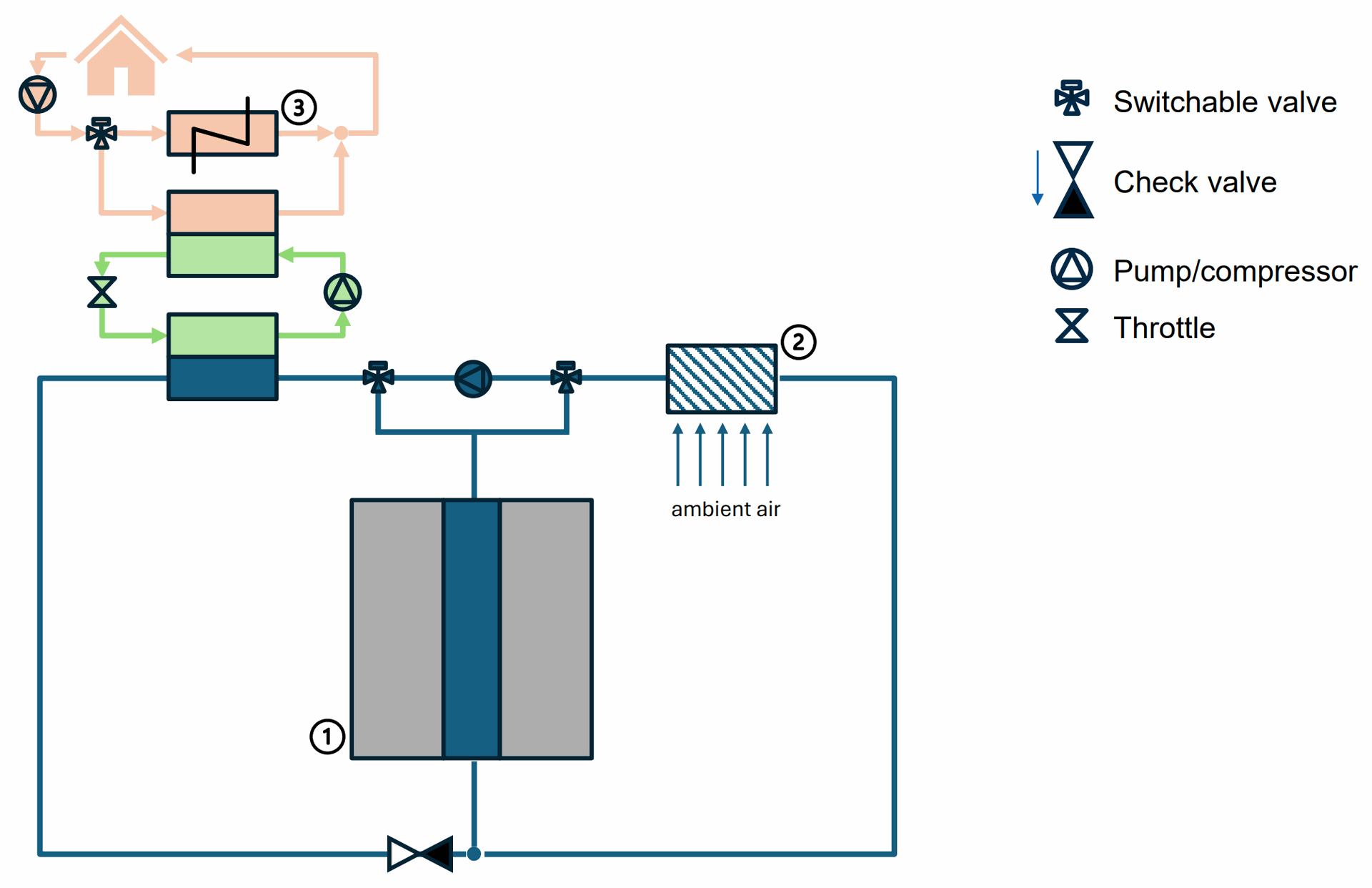Context
The aim of this project was to design and optimise a heating system for a single household. The unique feature of the system was that the installed heat pump could be operated using either ambient air or a water storage tank as a heat source. The water storage tank provided an isothermal heat source in winter, as the tank was in a phase change at 0°C.
It was investigated whether such a system would result in energy savings compared to a conventional ambient air heat pump that would need to be supported by a less efficient electric heater during cold days.

Results
The heating system was modelled using Python and simulated during a winter for different storage sizes, heat pump designs and control strategies.
The results showed that the energy savings from water storage were very limited, making it difficult to justify the investment. The main problem was that we were storing energy in water that only freezes at 0°C. This forced us to design the heat pump at already low temperatures so that the storage tank could provide the required heat on the coldest day using the storage tank. But this allowed the heat pump to be very efficient on cold days, limiting the usefulness of the storage. The storage tank might have been more interesting if it had contained another fluid with a higher phase change temperature.
